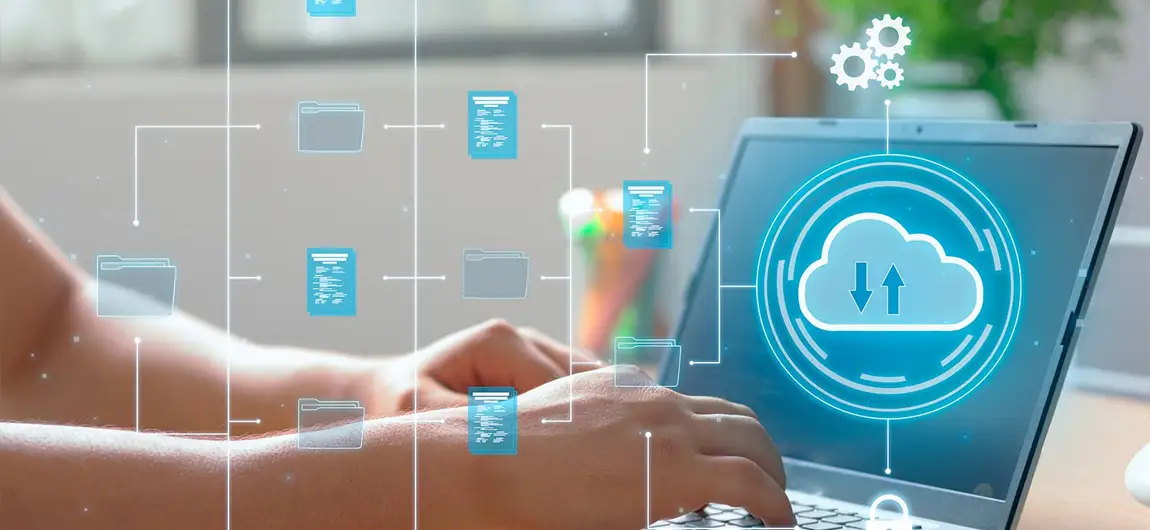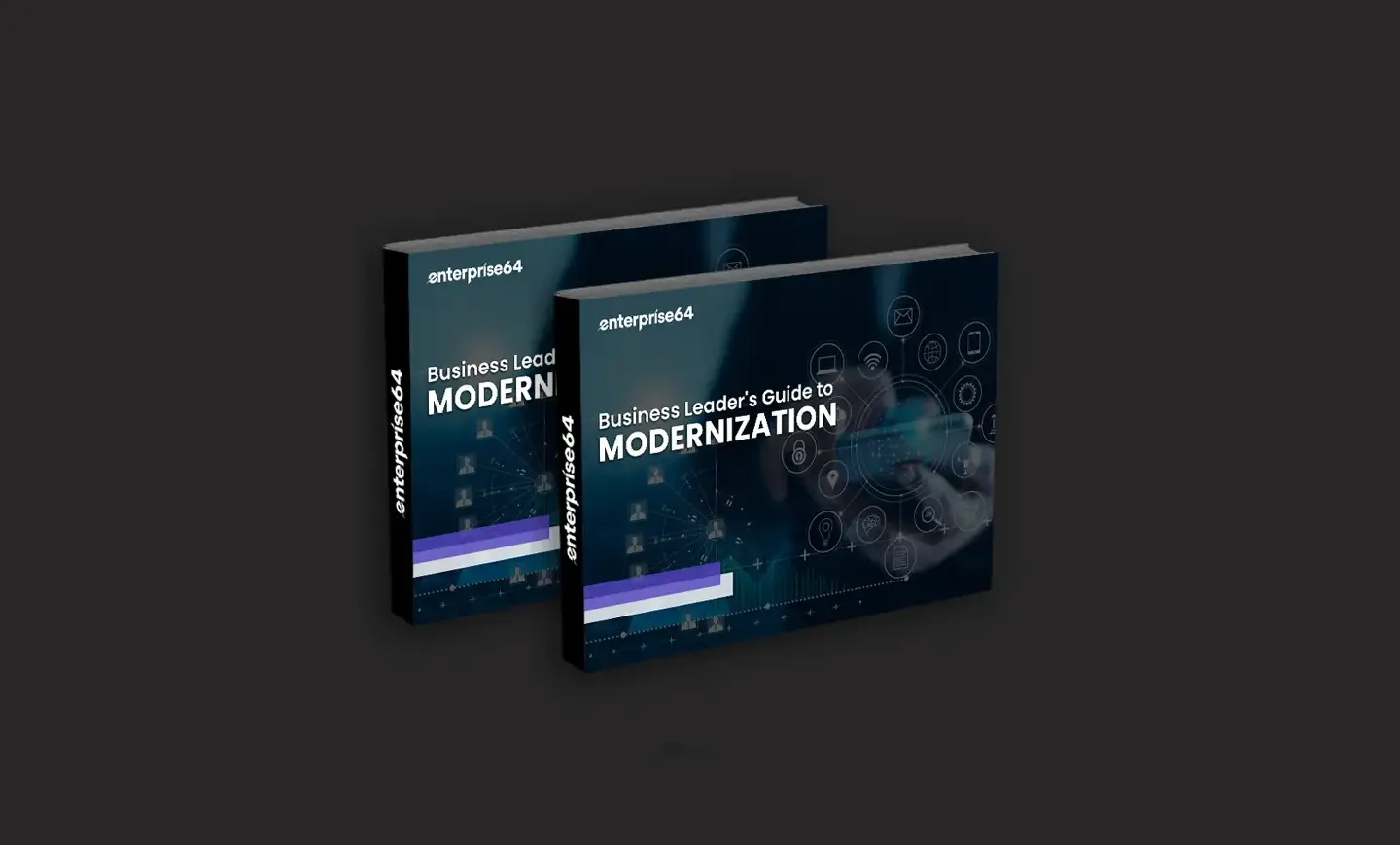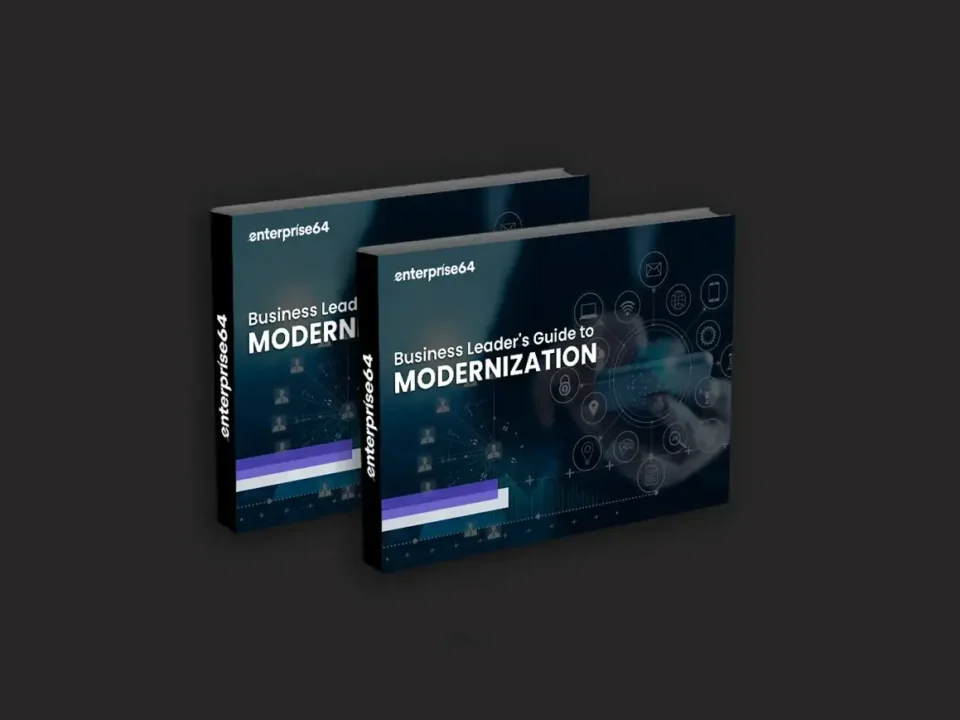As business leaders face the challenge of consistently operating and innovating in a highly saturated mid-market segment, the pressure for technology modernization also intensifies. This modernization is essential for businesses to seize new opportunities.
In fact, according to research, 87% of business leaders believe that technology or IT modernization is critical for business growth.
In this blog, we’ll explain IT modernization and why it is important, provide a few examples, discuss what questions you need to ask, and offer tips for modernizing your existing tech infrastructure.
What is Technology Modernization?
Technology modernization, also termed IT modernization, refers to updating and enhancing a company’s technology infrastructure, tools, and systems to stay competitive and meet evolving business needs.
This involves replacing outdated technologies with more efficient, scalable, and secure solutions to drive innovation and improve operational efficiency.
For many businesses, technology or IT modernization is more than just upgrading their IT infrastructure; it’s about transforming how they operate in a competitive mid-market segment.
Why is it Important?
Companies that rely on outdated systems face significant challenges. These legacy systems are often inefficient, costly to run, and unable to support the flexibility and innovation that modern businesses and technologies require.
Hence, tech modernization becomes essential for such businesses to:
- Improve efficiency by streamlining processes and reducing the risk of operational bottlenecks.
- Improve security by replacing vulnerable systems with newer, more secure technologies and platforms.
- Support scalability to accommodate growth without the need for constant overhauls.
- Drive innovation by giving businesses access to the latest tools and platforms that enable creative thinking.
Imagine a mid-sized manufacturing company that relies on a 15-year-old ERP system. This outdated system is slow, complex, and challenging to integrate with modern tools, and it lacks the real-time data capabilities needed for today’s fast-paced business environment.
Consequently, the company experiences delay in order processing, struggles with inventory management, and is unable to effectively meet customer demand.
By modernizing their technology, or upgrading to a cloud-based ERP system, they can automate processes, improve decision-making with real-time data, and scale operations more efficiently.
This reduces downtime, cuts costs, and allows the company to respond quickly to market changes, improving customer satisfaction.
In short, a technology modernization strategy is essential for staying relevant and competitive today in both technology and non-technology sectors.
Examples of Technology Modernization in Business
Cloud migration
One of the most common examples of modernization is moving from on-premises servers to the cloud. Cloud migration allows businesses to scale their operations without investing heavily in physical infrastructure.
It also provides flexibility, fluent remote work, better data management, and seamless collaboration across geographically distributed teams.
By migrating to the cloud, businesses can reduce costs and improve disaster recovery processes.
Automating software delivery pipelines
Automating the software delivery pipeline, often through continuous integration and continuous delivery (CI/CD) systems can drastically improve the speed and reliability of software development.
By automating testing, integration, and deployment, businesses can deliver new features and updates faster and with fewer errors, ensuring they stay ahead of customer demands and market trends.
Implementing AI tools
AI tools can optimize business processes by providing data-driven insights and automating repetitive tasks.
From customer service chatbots to predictive maintenance, AI helps companies operate more efficiently and make smarter decisions.
For example, AI-powered analytics tools can analyze large datasets to uncover trends humans might miss, enabling more vigilance in business strategy development.
Upgrading legacy systems
Many businesses still rely on legacy systems that may be several decades old. Upgrading these systems ensures they are compatible with modern technologies and capable of supporting new business models.
This can be as simple as moving from older ERP systems to newer, cloud-based platforms or implementing modern cybersecurity measures to protect critical data.
Questions to Ask for a Better Technology Modernization Approach
When considering modernization, CEOs and CXOs should ask the right questions to ensure the process aligns with business goals.
What benefit of modernization is most important for my business?
Start by analyzing the values that are most important and non-negotiable for your business. Do you want to gain better insights into your customers? Is attracting or retaining top talent difficult? Do you wish to offer efficient solutions for your customers? Or is it faster time-to-market?
Answering these questions will help you define your case for modernization. You’ll be able to set your priorities in order and establish that your modernization strategies are aligned with your business goals.
What activities to do in a quarter to change the situation?
Once you have your business case and priorities on paper, create a plan for now, what’s next, and what comes later.
For instance, consider what can be done in the next 60 or 90 days. Your tech modernization initiative shouldn’t be a big, noisy event costing millions of dollars, but your approach can start with a simple initiative that delivers value immediately.
This will also give you ample time to listen to internal and external feedback and market changes and react accordingly.
Can AI speed up my modernization job?
The cases of generative AI assisting in modernization initiatives are apparent.
Suppose your company needs to modernize its legacy platforms through outdated languages. You can use an AI library to generate a series of functional requirements that are as good as complete. Eventually, a resource will be allocated to optimize the results and implement the functionality.
AI will not only help your business deliver value efficiently but also train your IT team in the process.
Your technical personnel will learn how to incorporate artificial intelligence into your business operations, giving your organization the edge on future modernization efforts.
Tips to Accelerate Tech Modernization
Despite the increasing pressure to move quickly, most modernization projects are slow.
With infrastructure and application modernization technology credited as one of the significant reasons for budget increases this year, countering the timelines on those projects has become more critical than ever.
Create a framework to guide decisions
A clear framework ensures that every decision aligns with your long-term business objectives.
This framework should outline the technologies to focus on, the goals for modernization, and the timelines for achieving them.
Having a roadmap will help you avoid common pitfalls like unrealistic project scope or mismatched priorities.
Apply agile principles for quick wins
Using agile principles in your modernization efforts can help your business achieve faster results.
Break larger projects into smaller, more manageable pieces and focus on delivering value in increments.
This approach allows you to make adjustments along the way and respond more effectively to changes in the business environment.
Use generative AI to add speed
Generative AI can greatly enhance the speed of your modernization efforts. From automating content creation to optimizing code, generative AI can free up valuable resources and reduce manual work.
By integrating AI into your workflows, you can reduce time to market, create more personalized customer experiences, and optimize business processes faster.
Handpicked content: AI Business Integration: A Game-Changer for Mid-Market Firms
Tech Modernization is Never Finished
Experienced technology solutions providers and their clients realize that IT modernization is a continuous journey, not a one-time project. As technology evolves, so do the needs of your business and customers.
CEOs and CXOs must remain flexible, adaptable, and committed to regularly reviewing and updating their technology strategies.
In doing so, businesses can remain competitive, resilient, and prepared for growth in today’s digital industry.










